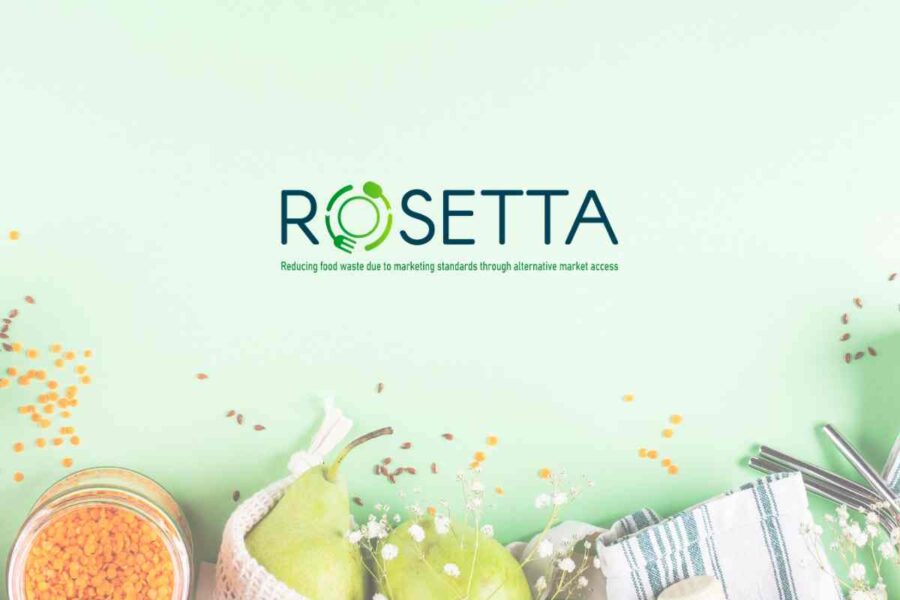Report on Green Plains Inc.’s Strategic Pivot to Low-Carbon Ethanol Production
Green Plains Inc. is strategically positioning itself within the global energy transition, leveraging its “Advantage Nebraska” strategy to align with policy-driven opportunities in the low-carbon fuel sector. This report analyzes the company’s operational framework, technological investments in carbon capture, and alignment with federal incentives, with a significant focus on its contributions to the United Nations Sustainable Development Goals (SDGs). The company’s approach integrates decarbonization into its core economic model, aiming to redefine profitability in the biofuels industry.
Analysis of Operational and Financial Framework
Operational Efficiency and Asset Optimization
Green Plains has demonstrated disciplined execution of its operational strategy. This commitment to efficiency is a core component of its contribution to SDG 12 (Responsible Consumption and Production) by maximizing resource utilization.
- In Q2 2025, the company achieved a 99% utilization rate across its ethanol plant portfolio, indicating high asset productivity.
- Strategic divestitures of non-core assets and the transition of ethanol marketing to Eco-Energy, LLC have resulted in $50 million in working capital improvements.
- These initiatives have led to annualized cost savings exceeding $50 million, reflecting a successful shift toward leaner operations.
Financial Position
A stable capital structure has been secured to support large-scale decarbonization projects. The company’s financial health provides the foundation for its long-term investments in sustainable infrastructure.
- The extension of its $127.5 million Mezzanine Notes provides financial stability during its transformation phase.
- The company maintains a strong liquidity position with $209.4 million in cash and an additional $200.7 million available under its revolving credit facility.
Carbon Capture and Sequestration (CCS) Project Analysis
Project Scope and Technical Specifications
The company’s carbon capture project in Nebraska is the cornerstone of its decarbonization roadmap and a direct investment in sustainable infrastructure, aligning with SDG 9 (Industry, Innovation, and Infrastructure).
- Beginning in Q4 2025, Green Plains will sequester an initial 800,000 tons of biogenic CO₂ annually from its Central City, Wood River, and York facilities.
- The infrastructure, developed as part of the Tallgrass Trailblazer CCS project, is designed for scalability, with the potential to expand to 1.2 million tons per year to meet future demand.
Financial and Environmental Impact
The CCS project is projected to have a profound impact on both the company’s financial performance and its environmental footprint, directly supporting SDG 13 (Climate Action).
- The project is designed to leverage the 45Z Clean Fuel Production Credit, which incentivizes reductions in carbon intensity (CI).
- For the Central City facility, the CI score is projected to decrease from 51 to 19 post-sequestration, enhancing its competitiveness and eligibility for tax credits.
- Preliminary analysis indicates that carbon capture operations could generate approximately $180 million in annualized earnings, independent of revenue from other product streams.
Strategic Alignment with Policy and Sustainable Development Goals (SDGs)
Influence of Regulatory Frameworks
Federal policy, particularly the 45Z credit, is a critical enabler of the company’s strategy. The regulatory environment provides clarity and reduces execution risk by aligning with Green Plains’ existing operational strengths, such as its use of North American feedstocks and its favorable position under the GREET emissions model.
Contribution to Sustainable Development Goals
Green Plains’ strategy demonstrates a multi-faceted contribution to the UN SDGs:
- SDG 7 (Affordable and Clean Energy): By lowering the carbon intensity of ethanol, the company increases the supply of cleaner transportation fuels, contributing to a more sustainable energy mix.
- SDG 9 (Industry, Innovation, and Infrastructure): The investment in and deployment of large-scale CCS technology represents a significant advancement in building resilient and sustainable industrial infrastructure.
- SDG 12 (Responsible Consumption and Production): The focus on maximizing plant utilization, improving efficiency, and creating value from biogenic CO₂ embodies the principles of sustainable production.
- SDG 13 (Climate Action): The sequestration of 800,000 to 1.2 million tons of CO₂ annually is a direct and measurable action to combat climate change by reducing greenhouse gas concentrations in the atmosphere.
Market Position and Outlook
Competitive Positioning
The integration of operational efficiency, carbon capture technology, and policy support establishes a durable competitive advantage for Green Plains. This model is expected to lower production costs, increase margins, and provide access to premium markets for low-carbon fuels. Meaningful earnings contributions from CCS operations are anticipated by late 2025, positioning the company to outperform peers.
Identified Risks
While the outlook is positive, the strategy is subject to external factors, including:
- Potential shifts in regulatory policy or federal incentive structures.
- Volatility in the market price for carbon credits and low-carbon fuels.
- Execution and operational risks inherent in the delivery of large-scale infrastructure projects.
Conclusion
Green Plains Inc. is actively implementing a strategy that architects a new business model for the biofuels industry, where environmental stewardship and profitability are integrated. By systematically leveraging carbon capture technology and aligning with supportive policy frameworks, the company is making direct and substantial contributions to key Sustainable Development Goals. The “Advantage Nebraska” initiative serves as a blueprint for achieving resilient growth and establishing a competitive advantage in the global transition to a low-carbon economy.
Analysis of Sustainable Development Goals (SDGs) in the Article
1. Which SDGs are addressed or connected to the issues highlighted in the article?
The article on Green Plains Inc. highlights strategies and operations that connect to several Sustainable Development Goals. The primary focus on renewable energy, technological innovation for decarbonization, and sustainable industrial practices directly aligns with the global sustainability agenda.
- SDG 7: Affordable and Clean Energy: The core of the article revolves around the production of low-carbon ethanol, a form of biofuel, which contributes to increasing the share of renewable energy in the energy mix.
- SDG 9: Industry, Innovation, and Infrastructure: The text details significant investments in innovative infrastructure, specifically the “carbon capture and sequestration (CCS) project in Nebraska.” It also discusses upgrading industrial processes to be more efficient and environmentally sound.
- SDG 13: Climate Action: The entire strategy of Green Plains is centered on climate change mitigation. The article explicitly discusses “decarbonization,” reducing carbon intensity (CI), and sequestering CO₂ emissions to combat climate change.
- SDG 12: Responsible Consumption and Production: The company’s emphasis on “operational efficiency,” achieving a “99% utilization rate,” and implementing cost-saving measures reflects a commitment to sustainable production patterns and efficient use of resources.
2. What specific targets under those SDGs can be identified based on the article’s content?
Based on the initiatives described, several specific SDG targets can be identified:
- Target 7.2: By 2030, increase substantially the share of renewable energy in the global energy mix.
- Explanation: Green Plains’ focus on producing “low-carbon ethanol” directly contributes to this target by increasing the supply of biofuels, a key type of renewable energy.
- Target 9.4: By 2030, upgrade infrastructure and retrofit industries to make them sustainable, with increased resource-use efficiency and greater adoption of clean and environmentally sound technologies and industrial processes.
- Explanation: The article’s centerpiece, the “Tallgrass Trailblazer CCS project,” is a direct example of upgrading infrastructure with clean technology. The goal is to make ethanol production sustainable by capturing its biogenic CO₂ emissions.
- Target 13.2: Integrate climate change measures into national policies, strategies and planning.
- Explanation: The article highlights how Green Plains’ strategy is enabled by and aligned with national policy, specifically the “45Z Clean Fuel Production Credit.” This demonstrates the integration of corporate climate action with governmental climate policy.
- Target 12.2: By 2030, achieve the sustainable management and efficient use of natural resources.
- Explanation: The company’s achievement of a “99% utilization rate” and its focus on “leaner operations” with annualized cost savings exceeding $50 million are direct evidence of pursuing the efficient use of resources in its production process.
3. Are there any indicators mentioned or implied in the article that can be used to measure progress towards the identified targets?
Yes, the article provides several quantitative and qualitative indicators that can be used to measure progress:
- Indicator for Target 9.4 (CO₂ emission per unit of value added): The article provides specific metrics for measuring the reduction of CO₂ emissions.
- It states that the company will begin “sequestering 800,000 tons of biogenic CO₂ annually.”
- It quantifies the impact on carbon intensity, noting that the Central City facility’s CI score is projected to “drop from 51 to 19 post-capture.”
- Indicator for Target 12.2 (Material footprint/resource efficiency): The article mentions a key operational metric that serves as an indicator of resource efficiency.
- The company achieved a “99% utilization rate across its ethanol plants,” which is a direct measure of how efficiently its production assets are being used.
- Indicator for Target 13.2 (Adoption and implementation of national strategies): The article points to specific policies as indicators of integrated climate action.
- Progress is measured by the company’s ability to leverage the “45Z credit” and align with the “GREET model,” a federal tool for evaluating fuel emissions. The financial benefits derived from these policies, such as the projected “$180 million in annualized earnings” from carbon capture, serve as a proxy for successful policy integration.
4. Table of SDGs, Targets, and Indicators
| SDGs | Targets | Indicators Identified in the Article |
|---|---|---|
| SDG 7: Affordable and Clean Energy | 7.2: Increase substantially the share of renewable energy in the global energy mix. | Production of “low-carbon ethanol” as a biofuel to contribute to the renewable energy supply. |
| SDG 9: Industry, Innovation, and Infrastructure | 9.4: Upgrade infrastructure and retrofit industries to make them sustainable… with greater adoption of clean and environmentally sound technologies. | – Sequestering 800,000 tons of biogenic CO₂ annually. – Carbon Intensity (CI) score dropping from 51 to 19 at a key facility. |
| SDG 12: Responsible Consumption and Production | 12.2: Achieve the sustainable management and efficient use of natural resources. | – Achieving a “99% utilization rate” across ethanol plants. – Annualized cost savings exceeding $50 million from leaner operations. |
| SDG 13: Climate Action | 13.2: Integrate climate change measures into national policies, strategies and planning. | – Strategic alignment with the “45Z Clean Fuel Production Credit.” – Favorable treatment under the federal “GREET model” for evaluating fuel emissions. |
Source: ainvest.com







